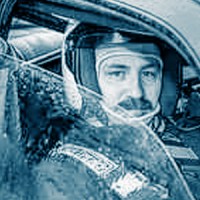Garrett Motion, the turbocharger company bought by Honeywell in 2004 and spunoff as an independent firm in 2018, has announced that it is two years away from production of an electric turbocharger. This is not to be confused with the current batch of e-boosters used by Volkswagen and Mercedes Benz that help keep turbines spinning when exhaust gases cannot.
Garrett has designed a turbocharger that combines the electric motor and turbocharger housing into one unit. Unlike a conventional turbo that utilizes exhaust gases to keep the turbine spinning which in turn produces “turbo lag” at low speeds, with Garrett’s machine the motor rapidly spins the turbines, dramatically increasing low-end power and acceleration. This allows Garrett to use a larger compressor and turbine for more boost. In turn, the electric turbo allows for a smaller engine displacement. The design thus avoids the need for larger turbines which would normally exhibit more “turbo lag.”
The benefits of this electric configuration are many, one being an increase of as much as 10% in engine efficiency, but for now the more realistic numbers are 2% to 4%, as current engines are not designed to take full advantage of this type of boost. In the future, however, engine displacement could be further reduced.
Another big advantage of this system is a reduction of the heat associated with conventional turbocharging, which drives up the air/fuel ratio and consequently increases NOx emissions. The electric turbo can be used with a larger turbine which stays cooler and doesn’t sacrifice response, and which maintains the ideal air-fuel ratio, resulting in lower emissions.
In a heavy-duty diesel application, harmful emissions could see reductions of up to 20%. The heavy-haul truck industry is looking at ways to transition to electric-powered vehicles, but the proper technology maybe decades away. However, electrification of many other systems, including this one, may be a great stop-gap measure for the time being.
Garrett Motion has yet to announce which manufacturer it will be partnering with or what kind of platform it will debut on, however, the potential use cases are endless and include production model sedans, pickups, heavy haul trucks, and race cars of all types.



